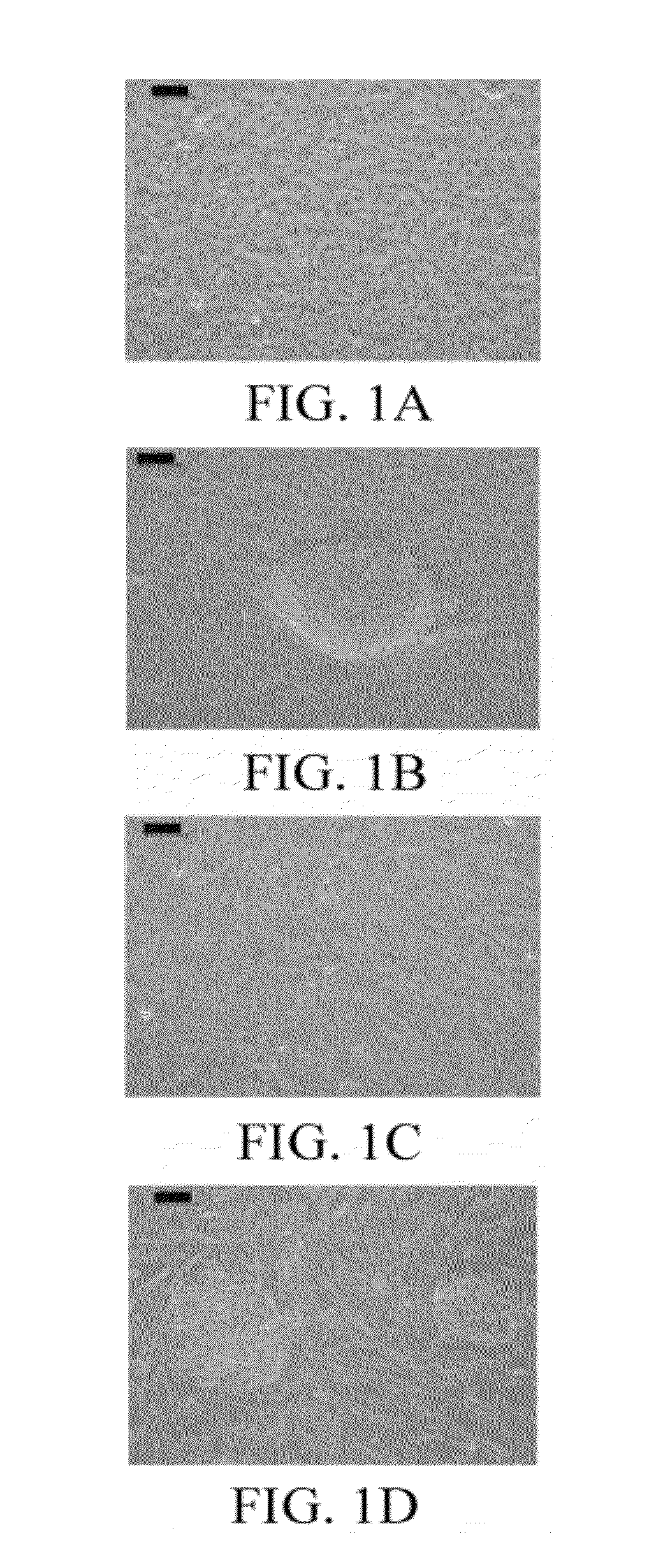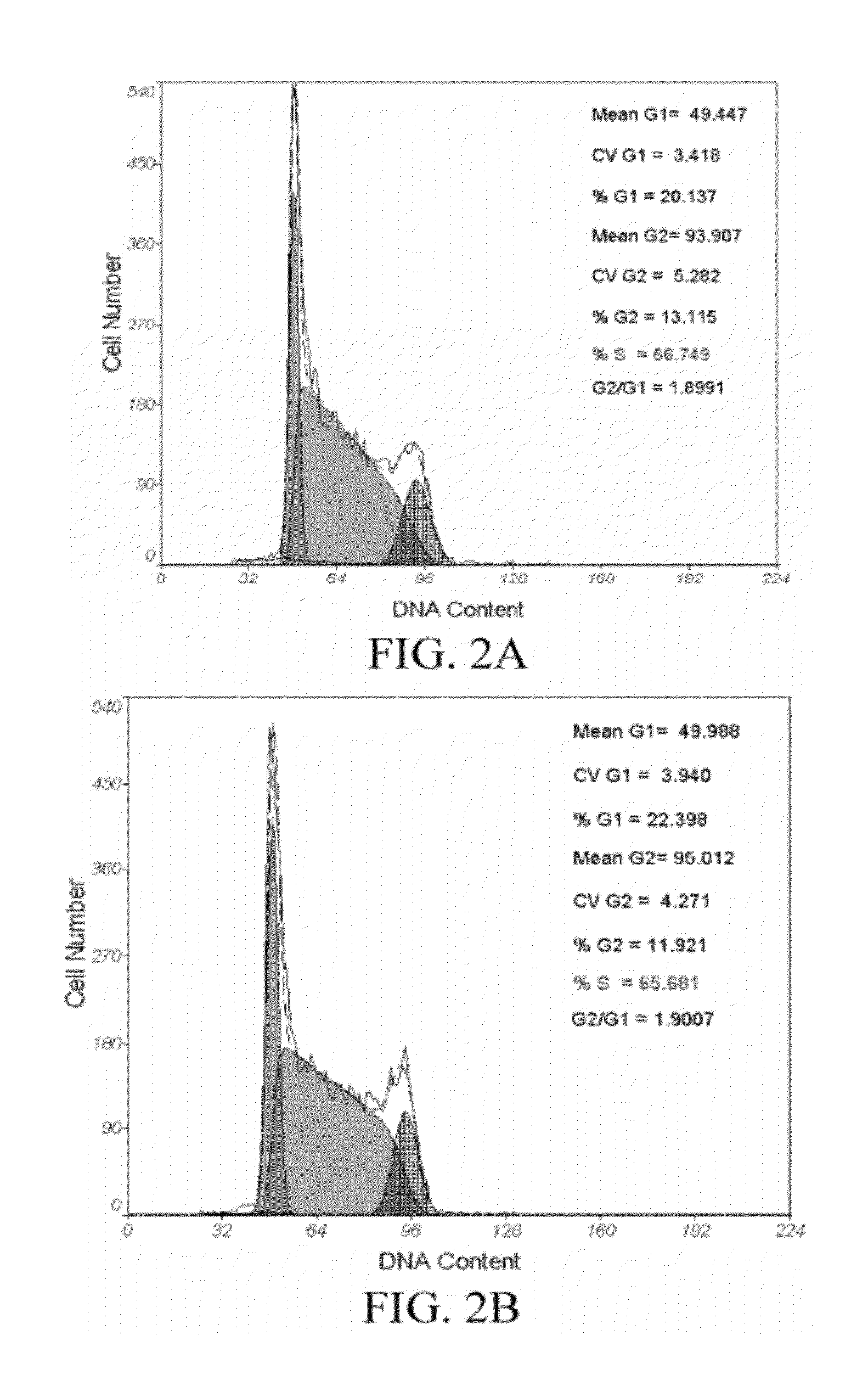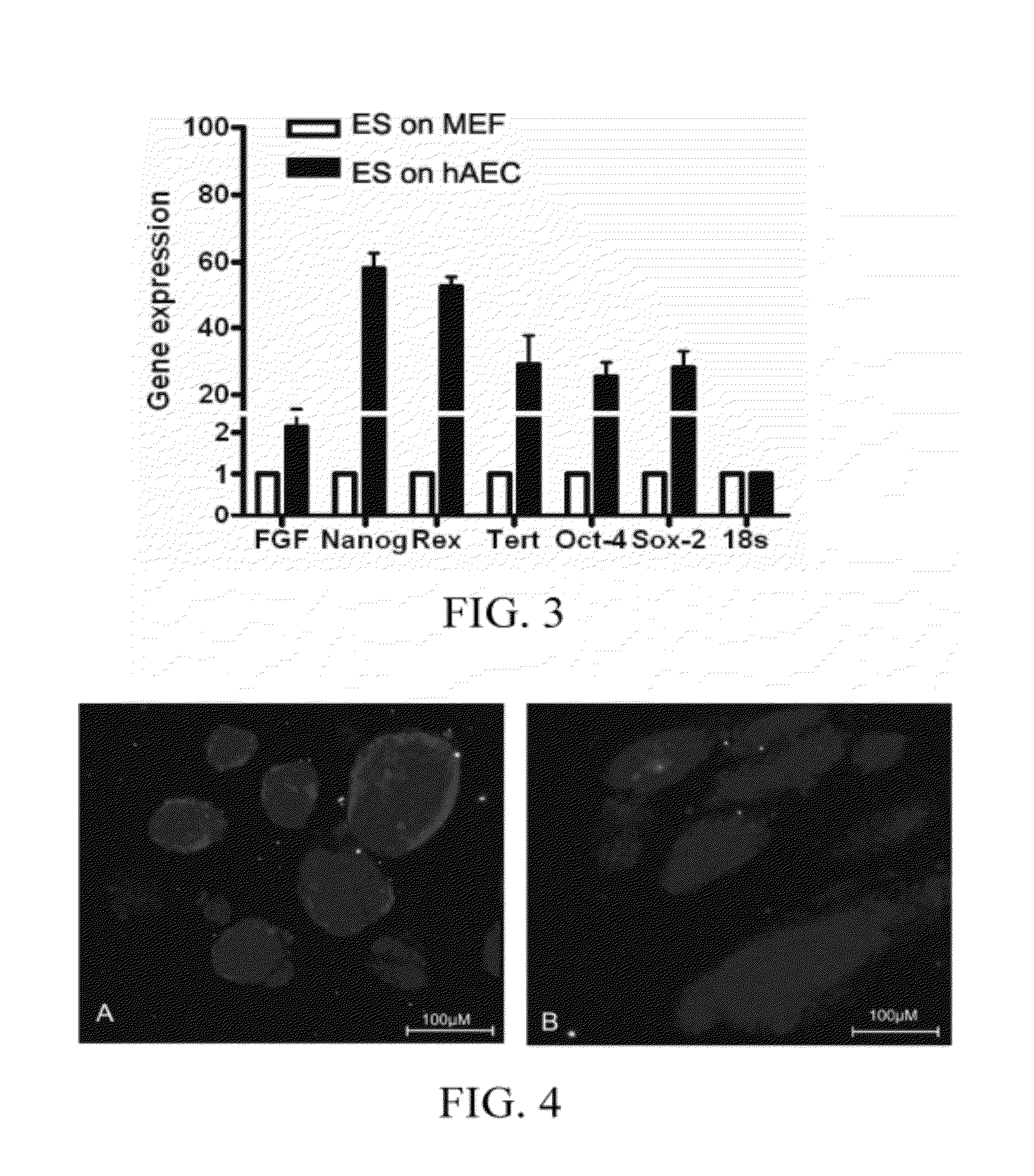Method for culturing stem cells
a stem cell and culture method technology, applied in the field of biological technology, can solve the problems of es cell mutation, affecting the maintenance of normal karyotype, and difficulty in obtaining pure es cells for biochemical and molecular biological analysis, and achieves the effect of reducing the culture cost of stem cells, simple and safe, and effectively solving contamination problems
- Summary
- Abstract
- Description
- Claims
- Application Information
AI Technical Summary
Benefits of technology
Problems solved by technology
Method used
Image
Examples
embodiment 1
Preparation of Human Amniotic Epithelial Cell Feeder Layer
[0052]Isolation and culture of human amniotic epithelia cells (HAECs): the amnion was peeled off from the placenta (which was negative for various virus indication, including types A, B, C, and E hepatitis, HIV, and syphilis) obtained after parturition through cesarean section, the amniotic epithelial cells were isolated, washed with PBS to remove the blood cells, digested with 0.25% trypsin at 37° C. for 30 min, beaten, added with RPMI1640 containing 10% of human umbilical cord serum to quench the digest, filtered with a sieve of 100 meshes, and centrifuged at 1,500 rpm. The supernatant was discarded, and the cells were inoculated at 1×104 / cm2 in a 10 cm petri dish, and cultured in a cell incubator at 37° C. with 5% CO2 to 80% confluence.
embodiment 2
Preparation of Mouse Embryonic Fibroblast (MEF) Feeder Layer
[0053]Isolation and culture of mouse embryonic fibroblasts (MEFs): embryos of mice during pregnancy at day 12.5 were removed of the viscera, head, and tail, and washed two times with PBS. The tissue was scissored, digested with 0.25% trypsin for 30 min, beaten uniformly with a burette, and centrifuged at 1000 rpm for 5 min The supernatant was discarded, and the cell pellets were beaten uniformly, added with DMEM culture medium (containing 10% FBS), cultured in an incubator at 37° C. with 5% CO2, and treated with mitomycin C after 2-3 passages.
embodiment 3
Culture of Human Embryonic Stem Cells
[0054]The human embryonic stem cell line hHES1 was respectively cultured on the two feeder layers obtained in Embodiments 1 and 2 [Wu C F, Tsung H C, Zhang W J, et al. Reprod Biomed Online. 2005 December; 11(6):733-9]. KO-DMEM medium supplemented with 10 ng / ml bFGF, 5% human umbilical cord serum, and 12 ng / ml hLIF was used, HES cell clones at day 3 day of culture were used for molecular biological test, and qRealtime-PCR, immunofluorescence IF, and Western blotting were used for detecting the gene expression differences of Nanog, Oct4 and other markers; and flow cytometry (FCM) was used for detecting the cell cycle difference of HES. hHES1 after 20 passages was analyzed for chromosome karyotype by G banding. 1×106 HES cells was collected and intramuscularly injected respectively into the back legs of the SCID mice of 4-8 weeks. After about 7-8 weeks, it was found though touch that a tumor was formed, the mice were sacrificed, a paraffin section w...
PUM
| Property | Measurement | Unit |
|---|---|---|
| concentration | aaaaa | aaaaa |
| concentration | aaaaa | aaaaa |
| concentration | aaaaa | aaaaa |
Abstract
Description
Claims
Application Information
 Login to View More
Login to View More - R&D
- Intellectual Property
- Life Sciences
- Materials
- Tech Scout
- Unparalleled Data Quality
- Higher Quality Content
- 60% Fewer Hallucinations
Browse by: Latest US Patents, China's latest patents, Technical Efficacy Thesaurus, Application Domain, Technology Topic, Popular Technical Reports.
© 2025 PatSnap. All rights reserved.Legal|Privacy policy|Modern Slavery Act Transparency Statement|Sitemap|About US| Contact US: help@patsnap.com



